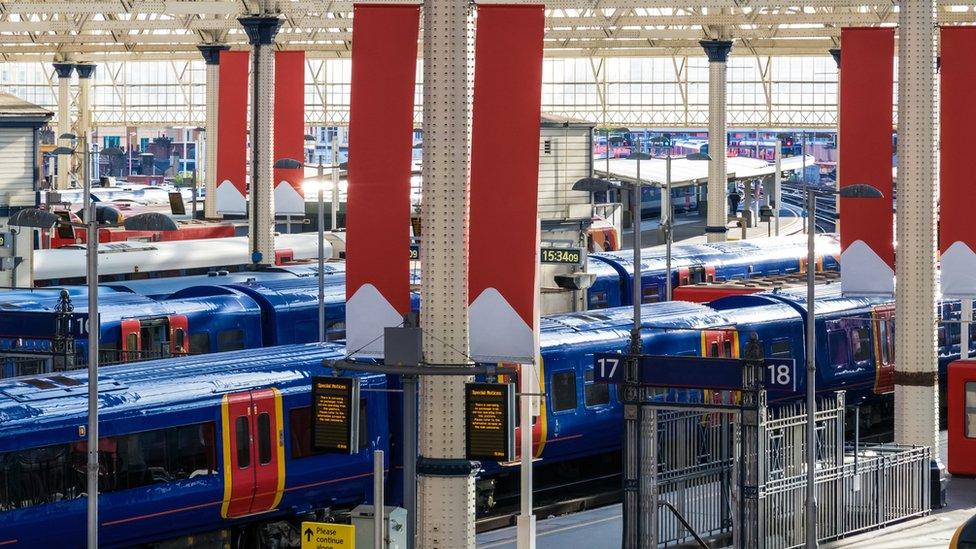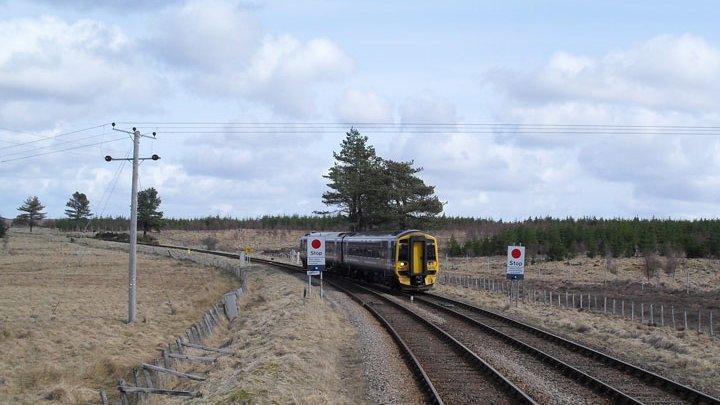Rail firms mull iris scan train fares
- Published

Technology such as biometric scanning and smarter trains could improve rail travel for customers, a body representing UK rail firms has said.
The Rail Delivery Group (RDG) has unveiled its plans for the future of rail travel, external.
Travellers could purchase fares after being identified via iris or fingerprint scans to enable faster ticket-free travel, it said.
Digital signalling could also enable trains to travel more closely together.
This would mean more frequent services could operate.
In his last budget Chancellor Philip Hammond committed £450m to trials of digital signalling technology and other railway improvements as part of the Digital Railway project.
Chiltern Railways is currently seeking volunteers to trial ticket-free travel via a Bluetooth app, external.
Once activated, Bluetooth tracks the phone from ticket hall to destination and customers are charged accordingly and let through barriers.
Ticket inspectors would still be able to check the app, a spokeswoman said.
The trial will be conducted later this year on the route between Oxford Parkway and London Marylebone.
"This blueprint sets out how we can harness digital technology to make journeys better for passengers and freight customers on a railway that's simpler and easier to use," said RDG chief executive Paul Plummer at its annual conference in Birmingham.


Analysis: Richard Westcott, BBC transport correspondent
It all sounds good. Harnessing the latest technology to make the trains better.
But people have been calling for things like this for years, while actual progress has been very, very slow.
I pay well north of £4,500 for a season ticket, and it's still a piece of paper that I have to carry around in my pocket. I dread losing it.
When the trains are late or cancelled it's very hard to find out why, often the station staff and the train drivers are in the dark too because communication is so poor.
We still have a ticketing system where it's cheaper to buy an armful of singles for each leg of a journey, rather than one ticket taking you all the way. Meanwhile the machine you buy the tickets from doesn't always give you the best fare.
Believe it or not, several hundred signal boxes still rely on a worker pulling levers when he or she hears a bell.
Everyone agrees that technology could make a huge difference to a network squealing under the strain of record numbers of passengers using a lot of Victorian infrastructure.
But getting things done on the railways is very, very slow - and very expensive.
Right now, technology is not keeping up with demand.
And money for the big stuff will have to come from the taxpayer.
- Published7 November 2016

- Published13 October 2016

- Published9 August 2016
